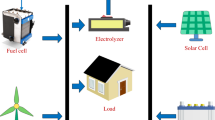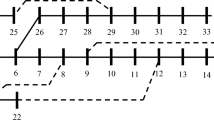Abstract
To solve the coupling relationship between the strip automatic gauge control and the looper control in traditional control strategy of tandem hot rolling, a distributed model predictive control (DMPC) strategy for the tandem hot rolling was explored, and a series of simulation experiments were carried out. Firstly, based on the state space analysis method, the multivariable dynamic transition process of hot strip rolling was studied, and the state space model of a gauge–looper integrated system in tandem hot rolling was established. Secondly, DMPC strategy based on neighborhood optimization was proposed, which fully considered the coupling relationship in this integrated system. Finally, a series of experiments simulating disturbances and emergency situations were completed with actual rolling data. The experimental results showed that the proposed DMPC control strategy had better performance compared with the traditional proportional–integral control and centralized model predictive control, which is applicable for the gauge–looper integrated system.










Similar content being viewed by others
Abbreviations
- A :
-
Constant
- b :
-
Backward slip
- C :
-
Control period
- c f :
-
Viscous friction constant
- d :
-
Vertical distance from looper roll to rolling plane (mm)
- d :
-
Disturbance vector of system
- E :
-
Elastic modulus (MPa)
- f :
-
Forward slip
- F :
-
Rolling force (kN)
- g :
-
Gravitational acceleration (m/s2)
- h :
-
Thickness of strip (mm)
- J :
-
Performance index of each controller
- \(\overline{J}\) :
-
Performance index of each controller with the neighborhood optimization method
- J lp :
-
Inertia of looper roll (kg m2)
- k f :
-
Deformation resistance (MPa kN−1)
- L :
-
Distance between adjacent stands (mm)
- L 3 :
-
Length of looper arm (mm)
- \(\dot{L}(\theta )\) :
-
Actual length of strip (mm)
- M :
-
Torque of looper motor (kg m2)
- M m :
-
Mill stiffness (kN mm−1)
- P :
-
Prediction period
- q :
-
Intermediate variable of first-order inertial process
- Q :
-
Weighting matrix of output quantity
- r :
-
Radius of looper roll (mm)
- R :
-
Radius of deformed work roll (mm)
- R :
-
Weighting matrix of input quantity
- S :
-
Roll gap (mm)
- S :
-
Subsystem
- S S :
-
Cross-sectional area of strip (mm2)
- t :
-
Time (s)
- T :
-
Rolled workpiece temperature (°C)
- T 0 :
-
Heat exchange between adjacent stands (°C)
- T R :
-
Temperature dissipation caused by air cooling (°C)
- T W :
-
Temperature dissipation caused by water cooling (°C)
- T C :
-
Heat transfer between stand roll and strip (°C)
- u :
-
Control vector of system
- U :
-
Control sequence of system
- U M :
-
Reference value of looper motor torque (MPa)
- U S :
-
Reference value of roll gap (mm)
- U V :
-
Reference value of rolling speed (m s−1)
- v :
-
Strip speed (m s−1)
- V :
-
Work roll speed (m s−1)
- w :
-
Strip width (mm)
- W R :
-
Looper roll mass (kg)
- W S :
-
Strip mass (kg)
- x :
-
State vector of system
- \(\hat{\user2{x}}\) :
-
Predictive value of x
- \(\user2{\overset{\lower0.5em\hbox{$\smash{\scriptscriptstyle\frown}$}}{x} }\) :
-
Neighbors of x
- y :
-
Output vector of system
- y d :
-
Desired value of y
- \(\hat{\user2{y}}\) :
-
Predictive value of y
- \(\hat{\user2{y}}\) :
-
Neighbors of y
- \(\user2{\hat{\overset{\lower0.5em\hbox{$\smash{\scriptscriptstyle\frown}$}}{y} }}\) :
-
Predictive value of \(\user2{\overset{\lower0.5em\hbox{$\smash{\scriptscriptstyle\frown}$}}{y} }\)
- α :
-
Rolling force differential coefficient
- β :
-
Forward slip differential coefficient
- γ :
-
Deformation resistance differential coefficient
- \(\psi\) :
-
Strip temperature differential coefficient
- σ :
-
Interstand tension (MPa)
- θ :
-
Looper angle (rad)
- ω :
-
Work roll rotation speed (rad s−1)
- ω L :
-
Looper arm rotation speed (rad s−1)
- τ d :
-
Transportation time of strip between adjacent stands (s)
- τ M :
-
Time constant of automatic torque regulator system
- τ S :
-
Time constants of hydraulic gap control system
- τ V :
-
Time constants of automatic speed regulator system
- i :
-
Stand number, i = 1, 2,…,7
- 0:
-
Initial value
- in:
-
Entry of stand
- out:
-
Exit of stand
References
S.K. Yildiz, J.F. Forbes, B. Huang, Y. Zhang, F. Wang, V. Vaculik, M. Dudzic, Appl. Math. Modell. 33 (2009) 3208–3225. https://doi.org/10.1016/j.apm.2008.10.035.
I.S. Choi, J.A. Rossiter, P.J. Fleming, Proc. Inst. Mech. Eng. Part I: J. Syst. Control Eng. 222 (2008) 137–152. https://doi.org/10.1243/09596518jsce401.
K. Asano, K. Yamamoto, T. Kawase, N. Nomura, Control Eng. Pract. 8 (2000) 337–344. https://doi.org/10.1016/s0967-0661(99)00186-0.
I.S. Choi, J.A. Rossiter, P.J. Fleming, J. Process Control 17 (2007) 509–521. https://doi.org/10.1016/j.jprocont.2006.12.005.
Z.Z. Zhong, J.C. Wang, IEEE Trans. Ind. Electron. 58 (2011) 3668–3679. https://doi.org/10.1109/tie.2010.2093473.
F.C. Yin, X.C. Wu, Metall. Res. Technol. 118 (2021) 215. https://doi.org/10.1051/metal/2020095.
X.D. Zhang, S.S. Gao, W. Gao, W. Zhang, X. Wang, IEEE Access 8 (2020) 117566–117573. https://doi.org/10.1109/access.2020.3003687.
R. Takahashi, Control Eng. Pract. 9 (2001) 987–993. https://doi.org/10.1016/s0967-0661(01)00087-9.
G. Hearns, M.J. Grimble, ISIJ Int. 40 (2000) 995–1002. https://doi.org/10.2355/isijinternational.40.995.
G. Hearns, P. Reeve, P. Smith, T. Bilkhu, IEE Proc.: Control Theory Appl. 151 (2004) 386–394. https://doi.org/10.1049/ip-cta:20040642.
J. Pittner, M.A. Simaan, IEEE Trans. Ind. Appl. 46 (2010) 2251–2258. https://doi.org/10.1109/tia.2010.2072978.
F.C. Yin, D.H. Zhang, Y.C. Zhang, Simulation 93 (2017) 307–321. https://doi.org/10.1177/0037549716666688.
Y.F. Ji, H. Yuan, L.B. Song, H.Y. Li, W. Peng, J. Sun, Int. J. Adv. Manuf. Technol. 118 (2022) 1213–1226. https://doi.org/10.1007/s00170-021-07912-8.
J.G. Van Antwerp, R.D. Braatz, J. Process Control 10 (2000) 1–8. https://doi.org/10.1016/s0959-1524(99)00050-5.
J.H. Lee, Int. J. Control Autom. Syst. 9 (2011) 415. https://doi.org/10.1007/s12555-011-0300-6.
X. Liu, X. Kong, J. Process Control 23 (2013) 1023–1040. https://doi.org/10.1016/j.jprocont.2013.06.004.
D. Van Hessem, O. Bosgra, J. Process Control 16 (2006) 225–241. https://doi.org/10.1016/j.jprocont.2005.06.003.
M. Wehr, S. Stockert, D. Abel, G. Hirt, in: 2018 IEEE Conference on Control Technology and Applications (CCTA), IEEE, Copenhagen, Denmark, 2018, pp. 1377–1382.
Y.J. Hu, J. Sun, W. Peng, D.H. Zhang, J. Process Control 97 (2021) 92–102. https://doi.org/10.1016/j.jprocont.2020.11.014.
X.D. Zhang, S.S. Gao, X.P. Liu, T.P. Huang, Int. J. Control Autom. Syst. 16 (2018) 577–585. https://doi.org/10.1007/s12555-017-0091-5.
F.C. Yin, J. Sun, W. Peng, H.Y. Wang, J. Yang, D.H. Zhang, J. Cent. South Univ. 24 (2017) 1369–1378. https://doi.org/10.1007/s11771-017-3541-6.
F.C. Yin, IEEE Access 8 (2020) 73972–73985. https://doi.org/10.1109/access.2020.2987940.
Y. Zheng, S.Y. Li, X.B. Wang, J. Process Control 19 (2009) 1427–1437. https://doi.org/10.1016/j.jprocont.2009.04.012.
S. Gao, Y. Zheng, S.Y. Li, Mathematics 6 (2018) 86. https://doi.org/10.3390/math6050086.
Y.S. Wei, Y. Zheng, S.Y. Li, Q.M. Zhu, Control Theory & Applications 34 (2017) 997–1007.
Y. Zheng, Y.S. Wei, S.Y Li, IEEE Trans. Autom. Sci. Eng. 15 (2018) 1749–1758. https://doi.org/10.1109/tase.2017.2780444.
D.P. Huang, H.Y. Li, X. Li, IEEE Trans. Circuits Syst. 67 (2020) 3123–3127. https://doi.org/10.1109/tcsii.2020.2983096.
Y.X. Wang, T. Zhang, Z.H. Cai, J. Zhao, K. Wu, Chin. J. Aeronaut. 33 (2020) 2977–2897. https://doi.org/10.1016/j.cja.2020.04.028.
J. Pian, Y. Zhu, Neurocomputing 169 (2015) 457–465. https://doi.org/10.1016/j.neucom.2014.09.089.
Y.S. Wei, J. Wu, S.Y. Li, N. Li. In: 2013 10th IEEE International Conference on Control and Automation (ICCA), IEEE, Hangzhou, China, 2013, pp. 664–669.
Acknowledgements
This work was supported by the National Key R&D Program of China (Grant Nos. 2018YFB1308700), the National Natural Science Foundation of China (Grant Nos. U21A20117 and 52074085, the Fundamental Research Funds for the Central Univer-sities (Grant No. N2004010), and the Liaoning Revitalization Talents651 Program (XLYC1907065).
Author information
Authors and Affiliations
Corresponding author
Ethics declarations
Conflict of interest
All authors disclosed no relevant relationships.
Rights and permissions
Springer Nature or its licensor holds exclusive rights to this article under a publishing agreement with the author(s) or other rightsholder(s); author self-archiving of the accepted manuscript version of this article is solely governed by the terms of such publishing agreement and applicable law.
About this article
Cite this article
Sun, J., Hou, F., Hu, Yj. et al. Application of distributed model predictive control based on neighborhood optimization in gauge–looper integrated system of tandem hot rolling. J. Iron Steel Res. Int. 30, 277–292 (2023). https://doi.org/10.1007/s42243-022-00838-9
Received:
Revised:
Accepted:
Published:
Issue Date:
DOI: https://doi.org/10.1007/s42243-022-00838-9




